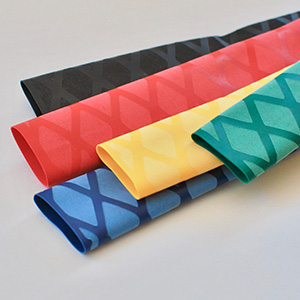 Heat shrink tubing is one of the most adaptable and widely used materials in electrical, mechanical, and even decorative applications. This handy product has transformed the way professionals and hobbyists alike approach tasks requiring insulation, bundling, repair, and more. Let’s dive into what makes heat shrink so versatile and explore its many uses.
Heat shrink tubing is one of the most adaptable and widely used materials in electrical, mechanical, and even decorative applications. This handy product has transformed the way professionals and hobbyists alike approach tasks requiring insulation, bundling, repair, and more. Let’s dive into what makes heat shrink so versatile and explore its many uses.
What is Heat Shrink?
Heat shrink is a specially designed tubing made from thermoplastic materials like polyolefin or PVC. It is engineered to shrink in diameter when heat is applied, forming a tight seal around the object it encases. This creates a durable, protective layer resistant to moisture, abrasion, and chemicals.
Applications of Heat Shrink Tubing
- Electrical Insulation
- Heat shrink is most commonly used for insulating electrical wires, providing a protective barrier against short circuits and environmental damage. It’s available in various sizes to fit cables of different diameters.
- Cable Management
- Bundling cables and wires together not only keeps things tidy but also prevents tangling or damage during operation. Color-coded heat shrink can also help identify specific wires in complex systems.
- Strain Relief
- At connection points, such as plugs or terminals, wires are susceptible to wear and tear. Heat shrink adds an extra layer of support, ensuring the longevity of these connections.
- Repair and Protection
- Damaged cables can often be salvaged using heat shrink tubing. By applying a section over the damage and heating it, the tubing forms a protective seal that restores functionality and safety.
- Waterproofing
- When paired with adhesive-lined (dual-wall) heat shrink, you can create waterproof seals for electrical connections exposed to moisture, such as those in automotive or marine applications.
- Mechanical Reinforcement
- Heat shrink adds strength to fragile components, such as soldered connections or frayed wires, reducing the risk of breakage.
- Decorative Uses
- Available in a variety of colors and patterns, heat shrink can also be used for aesthetic purposes, like customizing tool handles or crafting unique designs.
Advantages of Heat Shrink Tubing
- Durability: Offers excellent resistance to environmental factors, including UV rays, chemicals, and abrasions.
- Ease of Use: Simply slide it over the object, apply heat, and watch it conform perfectly to the shape.
- Cost-Effective: An affordable solution for insulation, repair, and bundling needs.
- Versatility: Suitable for both professional and DIY projects across industries such as automotive, aerospace, telecommunications, and home repair.
Selecting the Right Heat Shrink
When choosing heat shrink tubing, consider the following:
- Material: Polyolefin is the most common due to its flexibility and flame-retardant properties.
- Shrink Ratio: This determines how much the tubing will shrink. Common ratios are 2:1, 3:1, and 4:1.
- Adhesive-Lined vs. Non-Adhesive: For waterproof or highly secure seals, adhesive-lined tubing is ideal.
- Temperature Rating: Ensure the tubing can withstand the conditions of your specific application.
Heat shrink tubing proves itself time and again as a go-to solution for a wide range of problems. Whether you’re an electrician, mechanic, or craft enthusiast, the versatility of heat shrink makes it an indispensable tool in your arsenal.


